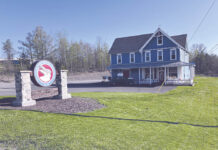Every farmer I talked to this summer had below-average first cutting hay yields. The dry weather we have had the last few months has slowed down pasture growth.
I have seen a lot hay being fed this fall. Hay leftover from last year is limited due to the cold weather in May that slowed down spring pasture growth. Years like this make us stop and look at how much hay we typically feed throughout the winter. It also makes us look at how much hay goes to waste.
What value do you put on your hay? If you purchase all of your hay, it is easy to add up the cost of feeding hay throughout the winter. However, if you make all of your own hay, you have to factor in every cost. Equipment costs and depreciation, fuel, repairs, twine and net wrap, fertilizer and lime, land payments or rent, and any hired labor are all costs associated with making hay. If you figure up all of these costs at the end of the summer and divide the number by the bales you made, you have the cost per bale.
How much hay is lost in storage?
After you determine your cost per bale, you have a good idea of how much it is costing you to feed your livestock through the winter. Can that cost be reduced by cutting losses due to storage and feeding?
Several research trials have shown hay losses from uncovered bales stored on the ground to be around 33%. On 100 acres that produces 3 tons per acre, with bales weighing 1,000 pounds, 600 bales would be made.
Storing those bales outside uncovered would result in a hay loss equivalent to 200 bales. Hay stored in barns typically results in losses of only 5%. The loss from that same field would be equivalent to around 30 bales if all the hay was stored inside. A barn can reduce hay waste by 28%. A hay storage barn does not have to be anything extravagant. Anything to keep the hay out of the weather will pay for itself long before the end of its useful life.
If storing your hay in a barn is not an option, bales could be stored on a stone pad or set on old tires to keep them off the ground. Bales soak up moisture from the ground like a sponge. If storing outside on the ground, try and choose a well-drained location away from any trees. Place bales end to end in rows running north and south. Rows should be at least three feet apart.
Reduced hay acreage
If you can reduce the number of bales you feed by 28%, you don’t have to make hay on as many acres. Those acres can be converted to pasture. If you do not increase the size of your herd, the increased grazing acres will allow you to graze later into the fall or early winter. Increasing your grazing days will further decrease the number of bales you have to feed.
By allowing the livestock to harvest the forages on their own, you reduce all of the inputs required to make hay. If there is not already water available to the livestock in those hayfields, some investment may be required but the hay savings will pay for it over time.
Losses due to feeding
There is also a great deal of hay waste from feeding. There are methods that can reduce hay waste from feeding. I know a few producers in Monroe County that have roofed structures to feed under. The hay is stored inside and fed inside. Several bales can be fed at once to eliminate the amount of times you have to have equipment out during the winter months.
There is very little hay waste with this method, but it does take a bigger investment to build the required structures. Manure collected in the structure can be applied back on the fields but requires time, fuel, and machinery.
Feeding with bale rings can help reduce waste from feeding but does tear up a lot of ground. You can move the rings often to scatter nutrients over an entire field. Often times in the spring, you may have to run a drag or disk over the area and sow grass seed. The amount of hay waste produced by unrolling bales can depend on ground conditions and if you have enough livestock to clean up a bale a day.
This method requires you to feed everyday but applies nutrients onto the pastures without using a manure spreader. If the ground is frozen or dry, there will be minimal soil disturbance. If the cattle clean up the hay each day, there will be little waste. If fields become wet, livestock will tramp the hay into the mud which will cause more waste.













